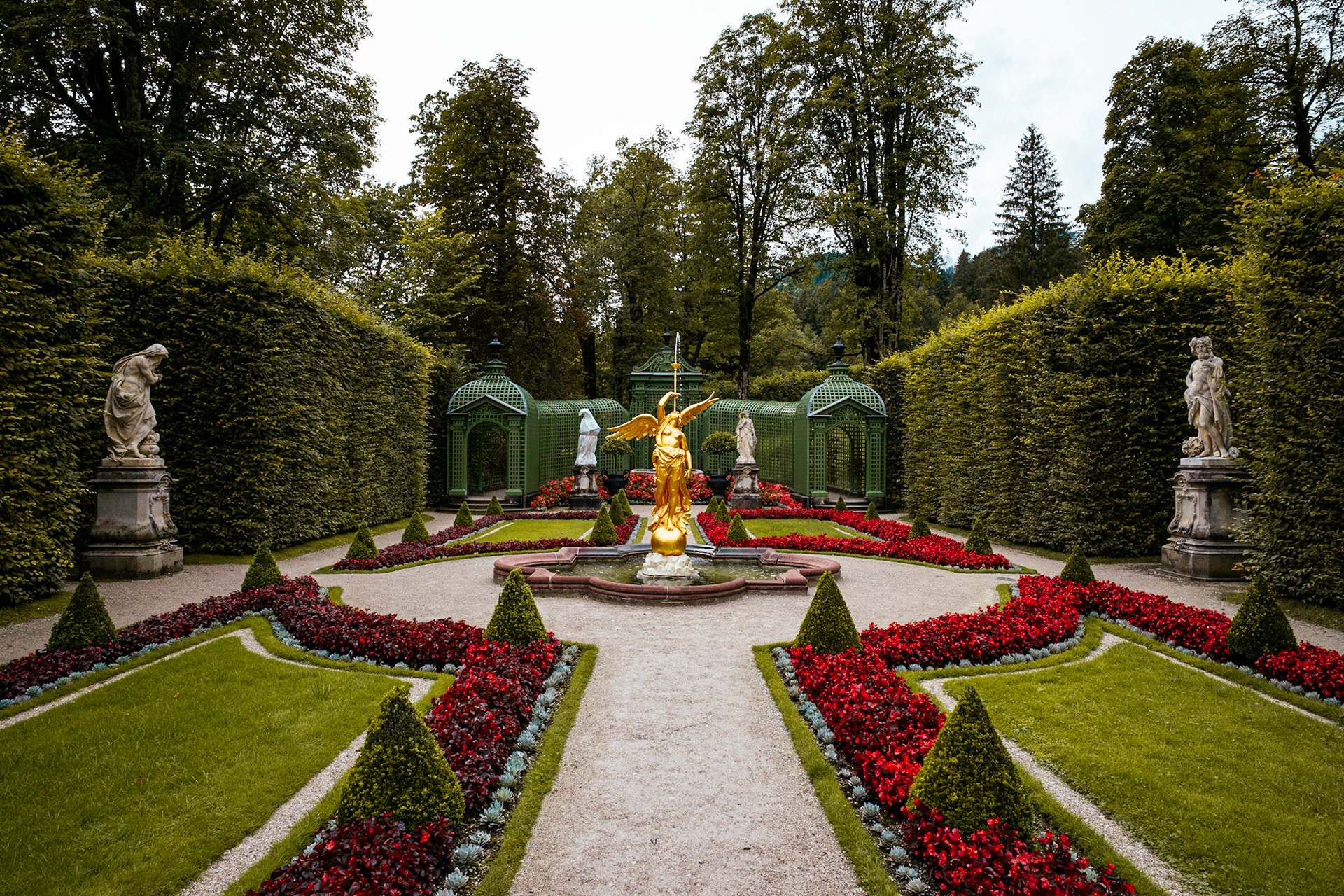Neuschwanstein Castle
Neuschwanstein Castle, perched atop rugged cliffs in the Bavarian Alps of Germany, is a stunning embodiment of fairy-tale fantasy and historical grandeur. Commissioned by Ludwig II of Bavaria in 1869, the castle was intended as a personal refuge for the reclusive king, but it has since captivated the imagination of the world. Inspired by the operas of Richard Wagner, Ludwig's design incorporates elements of romanticism, gothic revival, and Byzantine architecture, creating a breathtaking spectacle that seems to have emerged straight from a storybook.
Neuschwanstein's interiors are equally magnificent, with lavish rooms that showcase intricate woodcarvings, majestic murals, and opulent furnishings. Despite its medieval appearance, the castle was equipped with innovative technologies of the time, including central heating and an electric bell system. Today, Neuschwanstein Castle remains one of the most visited and photographed landmarks in Germany, enchanting visitors with its historical allure and the sheer beauty of its mountainous backdrop.



Linderhof Palace
Linderhof Palace, nestled in the serene Bavarian Alps of Germany, stands as a testament to the opulent tastes of King Ludwig II. Constructed in the late 19th century, this exquisite residence is the smallest of the king's three palaces but is no less magnificent. Inspired by the French Rococo style, Linderhof is a jewel of architectural and artistic craftsmanship, featuring lavish interiors, intricate details, and beautifully manicured gardens.

Its famous Hall of Mirrors and the elaborate fountain in the garden showcase Ludwig's fascination with the absolutist culture of the French Ancien Régime, drawing parallels with the grandeur of Versailles. Linderhof Palace remains a symbol of royal extravagance and a captivating attraction for visitors from around the world, eager to step into a bygone era of luxury and romance.


